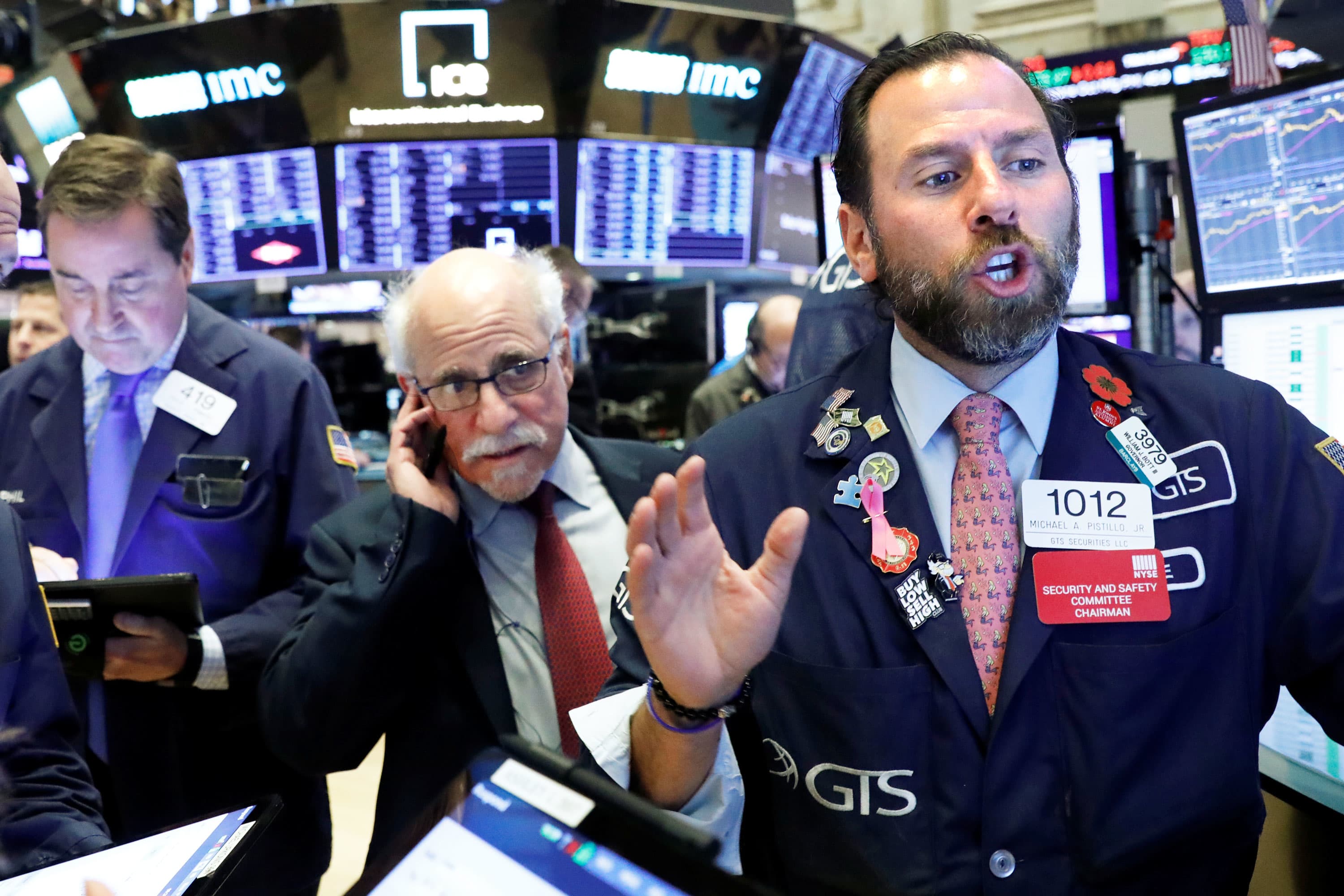Traders work on the floor at the New York Stock Exchange.
Brendan McDermid | Reuters
Company analysts see only modest upside for stocks overall this year, a rare view for the normally bullish crowd.
Average price targets of individual companies show that the typical stock is projected to have just 5.5% upside in 2020, according to an analysis by Bespoke Investment Group released last month. Bespoke used a bottom-up approach to make the report, compiling projections by analysts who cover companies and sectors and tend to do fundamental analysis on stocks.
Wall Street has kicked off 2020 with a flurry of price target increases for major stocks. In some cases — such as Apple, which received new projections from Jefferies, RBC Capital Markets and Deutsche Bank since the calendar turned — analysts have upped their targets after the stocks ran right through the previous ones.
Those updates may provide some breathing room for a market that was quickly converging with consensus expectations, but they likely won’t make analysts as bullish as they were a year ago. The average stock in the index entered 2019 with a projected 24% gain, according to Bespoke.
The tepid outlook was spread across multiple sectors.
“Tech, Health Care, Utilities, Financials, and Consumer Staples are all less than 5% below their price targets, which is a stark difference from last year when stocks were anywhere from 10 to 20% below their price targets,” Bespoke said in a note to clients.
Analysts who cover individual stocks tend to be more bullish than market strategists, who often predict overall levels for the market based on macro trends. Strategists currently predict an average gain of about 3.6% for the S&P 500 for the full year, according to the CNBC Market Strategist Survey, which was roughly 2% more than where the index was trading Friday.
Analysts are bullish on fewer companies in their industries as well. Half of all analyst ratings recommended buying a stock at the end of 2019, down from 55.4% the year before. The number of buy recommendations more closely resembles the end of 2009, when the share was 49.7%.
Big changes one way or the other for the largest stocks in the S&P 500 could have a large impact on the index, even if the average stocks posts only modest gains. For the 10 largest stocks, two — Apple and JP Morgan Chase — are already trading above their average price target. Amazon and Facebook, however, have double-digit upside to their price targets.
Consumer staples, financials and utilities are the three sectors with the lowest average upside, all below 3%. Energy is the only sector that cracks double digits, with the average price target 15.2% above the stock price. Energy also has the highest share of buy ratings, at 64.2%.
A big year for energy would serve as something as a catch-up run for the industry, which lagged the broader market in 2019 as oil prices spent much of the year below $60 a barrel. The West Texas International briefly spiked amid rising tensions between the United States and Iran but had fallen back below the $60 mark by Friday.
